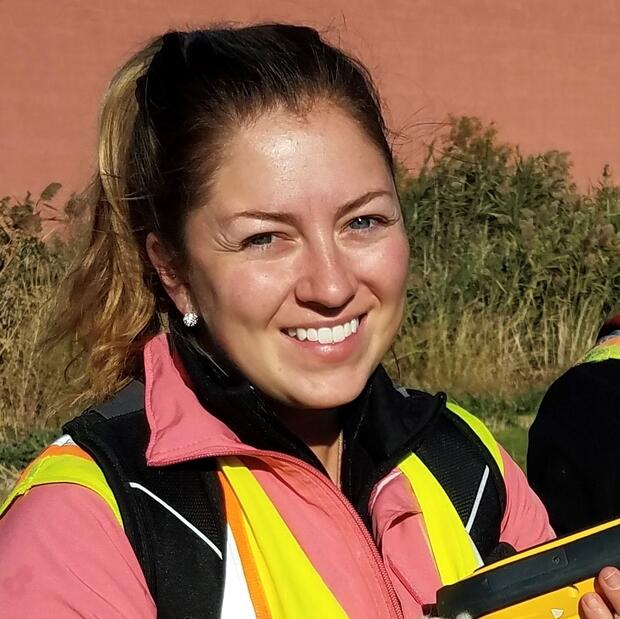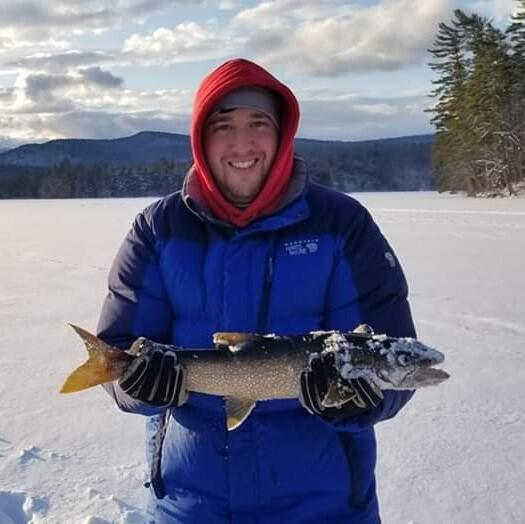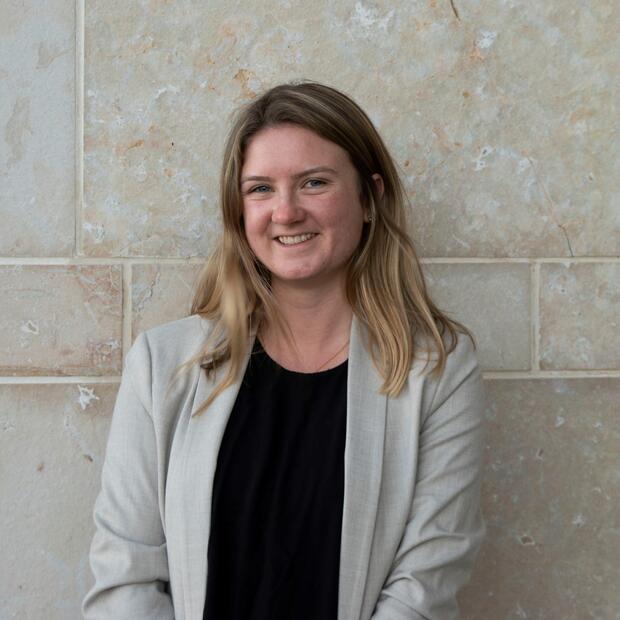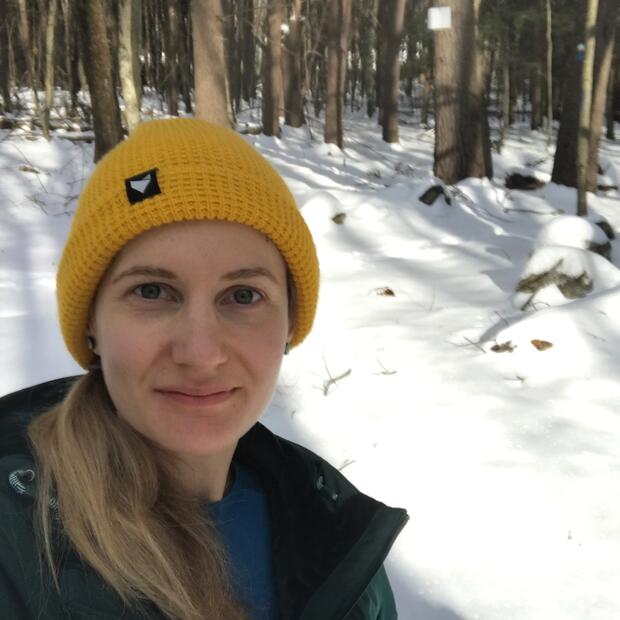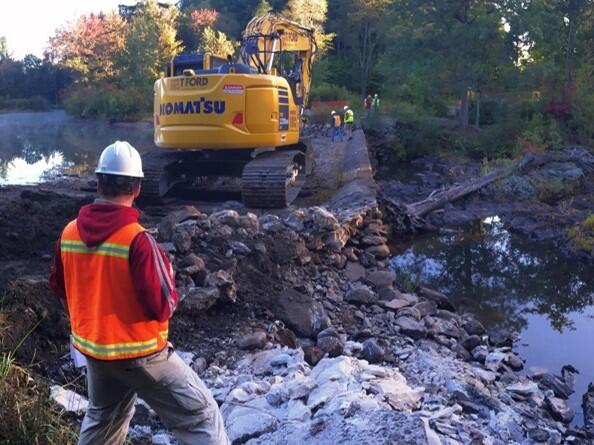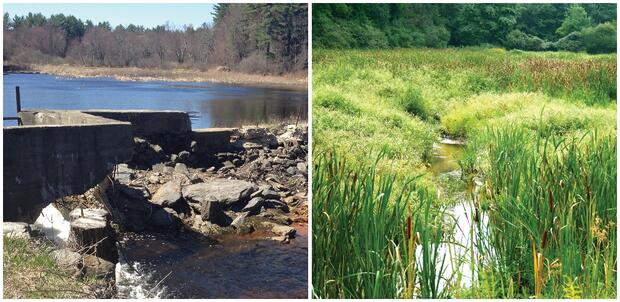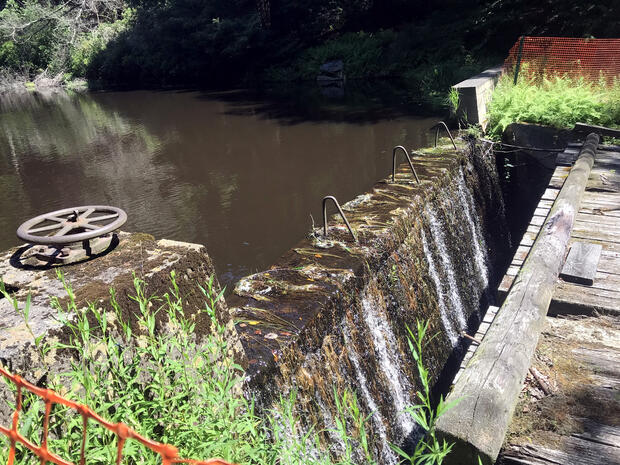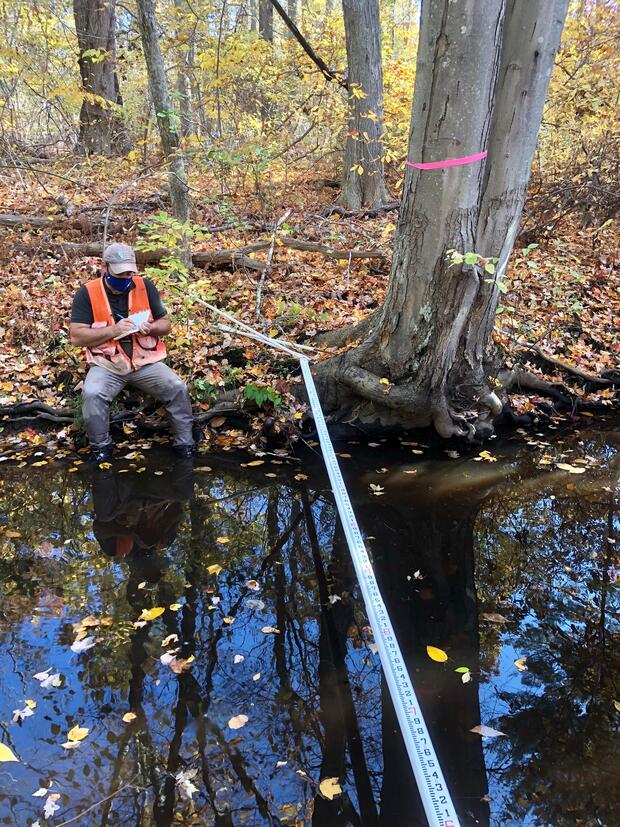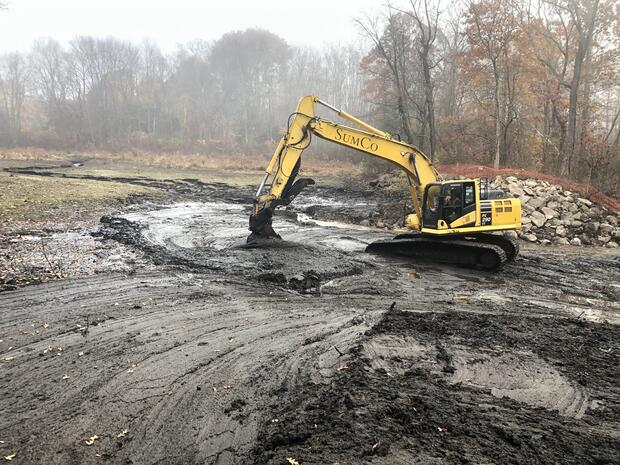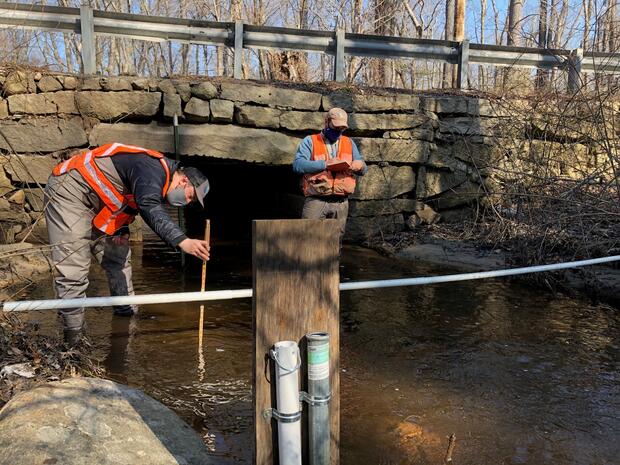Letter from the Director
Dear Friends and Colleagues,
The Division of Ecological Restoration (DER) is ramping up its work to meet the challenges of climate change adaptation and habitat restoration! This issue of Ebb & Flow highlights new staff and new Priority Ecological Restoration Projects, evidence of the growing demand for restoration assistance.
Six new staff joined the Division over the last six months. Some work with federal, state, and local agencies and NGOs to manage restoration projects. Others keep our internal and fiscal operations running smoothly. These new staff increase our capacity to manage projects and help us carry out our work more efficiently. We are thrilled to have them on our team.
As we add new staff, we are able to increase the number of restoration projects we support. Thus, DER recently accepted eight new river and wetland restoration projects to our Priority Projects Program. In addition, we are poised to solicit additional projects through a statewide Request for Responses. You’ll read more about the Priority Projects Program and the new projects in this Ebb & Flow.
Finally, I want to extend a particularly warm welcome to the Division’s new Assistant Director, Alyssa Sciuto. Alyssa steps into Eileen Goldberg’s very large shoes. Eileen recently retired after 20 years with the Division and the Riverways Program.
I’ll see you on the river,
Beth Lambert, Director
Welcome New Staff
DER is excited to welcome six staff members to our expanding team!
Jessica Cohn, Ecological Restoration Specialist
Jess joins DER as our new Ecological Restoration Specialist with the Cranberry Bog Program. Jess is an ecologist by training and brings experience in ecological restoration project management, wetland science, environmental policy, and climate adaptation planning. She is especially fond of plant ecology and always looks forward to an opportunity to be knee-deep in the mud anywhere from bogs to salt marshes to mangroves.
Chris Hirsch, Ecological Restoration Specialist
Chris Hirsch joins DER as an Ecological Restoration Specialist with the Dam Removal Practice. He will be helping to reconnect the Commonwealth’s rivers and streams by working with dam owners to remove obsolete dams. Prior to joining DER, Chris was an environmental scientist for the Neponset River Watershed Association, where he worked on topics ranging from water quality monitoring to habitat restoration and dam removal.
Ione Hughes, Program Coordinator
Ione joins DER as the new Program Coordinator as part of our fiscal team. Ione received her Bachelor of Arts in environmental studies and politics from Brandeis University in 2019, where she developed a passion for environmental and social justice. She began work at the Executive Office of Energy and Environmental Affairs working as a Program Coordinator for the MA Environmental Policy Act Office and the Office of General Counsel, and is thrilled to get the opportunity to continue to work in environmental protection and restoration with the Commonwealth.
Cristina Kennedy, Coastal Wetlands Restoration Specialist
Cristina joins DER as our new Coastal Wetlands Restoration Specialist. She comes with experience in coastal resource management, biological monitoring, watershed science, and environmental planning through positions at the MA Office of Coastal Zone Management, the Center for Coastal Studies, and the Charles River Watershed Association, as well as a Master of Science in estuarine ecology. She is excited to be part of DER’s growing team and to apply her knowledge to the successful restoration and protection of our coasts and estuaries.
Alyssa Sciuto, Assistant Director for Operations
Alyssa joins DER as our new Assistant Director for Operations. Prior to joining DER, Alyssa worked for 13 years in public safety where she gained experience leading projects, establishing and implementing new tools, technology, and procedures, and performed a wide variety of operational and fiscal functions. Alyssa graduated from Roger Williams University with a bachelor’s degree in criminal Justice and from Suffolk University with a master’s in criminal justice and public administration. Alyssa lives on the North Shore with her family and is excited to be a part of the DER team.
Calli Willette, Procurement & Grants Specialist
Calli joins DER as the new Procurement and Grants Specialist with our fiscal team. Calli received her Bachelor of Science degree in coastal marine policy and management with a minor in environmental economics from the University of Rhode Island in 2010. She has since gained experience with contract operations and budget management in both the private and nonprofit sectors. Calli looks forward to supporting DER’s mission through efficient grant management and contracting.
DER's Priority Projects Program

DER’s Priority Projects Program is the primary vehicle by which DER pursues wetland and river restoration projects that present the greatest benefit to the Commonwealth ecologically, socially, and economically. DER selects Priority Projects via a competitive statewide process, with selected projects eligible for technical assistance, engineering services, and grant funding. Once completed, DER’s Priority Projects will provide substantial social, environmental, and economic benefits to the Commonwealth and local communities. These projects will improve public safety, increase resilience to climate change, create opportunities for outdoor recreation, improve habitat, and create jobs.
To review a full list of DER’s projects, check out DER’s interactive project map.
DER's Priority Projects Program: Pre-Request for Responses
DER is excited to announce a solicitation for a new round of Priority Projects. The pre-Request for Response (pre-RFR) period is now open, which gives potential applicants an opportunity to preview what the official RFR will entail. During the pre-RFR period, potential applicants are encouraged to reach out to DER to ask project-specific questions. Once the pre-RFR period closes and the official RFR is released on April 20th, project-specific questions will no longer be allowed and only clarifying or technical questions regarding the application and application process will be permitted during a formal question and answer period.
This year, DER is soliciting projects including cranberry bog restoration, dam removal and river restoration, coastal wetland restoration, or a combination of these types. Projects will be considered at all stages of development that align with DER’s mission to restore and protect the Commonwealth’s rivers, wetlands, and watersheds for the benefit of people and the environment. Selected projects will be eligible to receive technical assistance from DER staff, technical services by qualified contractors, and/or direct funding. For more information including answers to frequently asked questions, visit DER’s Priority Project pre-RFR webpage.
DER's Priority Projects Program: Eight Newly Designated Priority Projects
In January, DER announced that eight new projects had been designated as Priority Projects as part of DER’s Priority Projects Program. Five projects in Carver, Falmouth, Nantucket, Northampton, and Plymouth received full Priority Project status, and three projects in Worcester and Plymouth received “Provisional” Priority Projects status, which means they will be reevaluated after a year in order to determine their long-term readiness for implementation. Six of the projects restore wetland and stream habitat on former cranberry farmland. Two projects revitalize urban rivers. Governor Baker highlighted the importance of these projects and remarked that the “Administration is proud to support local projects [that] will set Massachusetts land on a path back to its natural, healthy state. Ecological restoration provides a variety of benefits, including improved water quality, recreational opportunities, public safety, and climate change resilience.”
For more details about these new projects, take a look at the press release from January.
DER's Priority Projects Program: New Funding for Six Current Priority Projects
In early March, DER awarded grants to six of DER’s current Priority Projects. These projects focus on river and wetland restoration to restore healthy habitat while also helping to prevent storm damage, address aging infrastructure, and increase opportunities for outdoor recreation. A total of $235,000 in state capital funds were directed to advance these Priority Projects. Energy and Environmental Affairs Secretary Kathleen Theoharides emphasized the benefits of these projects and commented that they “…will put these communities in a better position to prepare for the impacts of climate change and build a more resilient future. Supporting the revitalization of our rivers and wetlands will restore streamflow and important habitats, open new recreational opportunities for residents, and remove aging infrastructure.” For more information about these projects and the funding they received, take a look at the press release from early March.
Coming up: Regional Restoration Partnerships Program
DER has established a new Regional Restoration Partnerships Program to support regional partnerships working to restore aquatic ecosystems throughout Massachusetts. The program will launch this spring with an RFR (Request for Responses) to solicit proposals from eligible nonprofit organizations and regional planning agencies to become Pilot Partners in the program. DER will provide funding and technical assistance to support selected Pilot Partners over a 3-5 year period. The goal of the program is to build lasting local and regional capacity to advance restoration activities that align with DER priorities. Increased regional capacity will accelerate the delivery of restoration benefits to ecosystems and communities across the Commonwealth. Tentative key dates for the Partnerships Program launch are as follows:
Pre-RFR release: Late May 2021
RFR release: mid-June 2021
Pilot Partner selection: late summer 2021
Interested potential applicants are encouraged to contact Jenny Sanders, DER’s Ecological Restoration Partnerships Specialist, with questions.
Project Highlight: Restoring Third Herring Brook through Three Dam Removals
Third Herring Brook is a perennial stream on the South Shore of Massachusetts, forming much of the border between the towns of Hanover and Norwell as it flows from Jacob’s Pond to join with the North River. For over a decade, DER has partnered with the North and South Rivers Watershed Association (NSRWA), NOAA Restoration Center, the Massachusetts Bays National Estuary Partnership (MassBays), US Fish & Wildlife Service, and private dam owners on the Third Herring Brook restoration project. This project is focused on removing three dams and addressing streamflow stress. Both impair the ecological function of the brook and its tributaries.
The Third Herring Brook restoration project’s first dam removal was the removal of Mill Pond Dam in 2014. The Mill Pond Dam was owned by the South Shore YMCA, which found the dam to be expensive to maintain and a liability. Two years later, in 2016, the Tack Factory Pond Dam was removed. This dam had originally been built to power a manufacturing plant, but had fallen into disrepair. The dam was owned by Cardinal Cushing Centers. Removal of the Tack Factory Pond Dam eliminated the risks associated with the aging dam and opened over eight miles of habitat on Third Herring Brook and its tributaries, allowing fish and wildlife to access these once inaccessible areas.
This past November, one of the final stages of the Third Herring Brook project was completed with the removal of the Peterson Pond Dam, owned by PREP Property Group. This dam consisted of an approximately 250-foot-long, 10-foot-high earthen embankment, with a stone masonry wall along the right downstream side of the dam. Removal of the dam opened an additional 1.3 miles of instream habitat for fish and allowed for future passage upstream to Jacobs Pond, which reconnects 62 acres of river herring spawning habitat.
Small dam removal has been shown to provide numerous ecological benefits, as demonstrated in recent research by the University of Massachusetts Amherst. Removal of these barriers also aids fish passage through the system and helps fish and wildlife adjust to climate change impacts by expanding the quantity, quality, and diversity of habitat available. Overall, the Third Herring Brook restoration project has improved water quality and river health, and reconnected 10 miles of river habitat to the tidal North River, benefitting numerous fish species including wild brook trout and river herring. The brook has since been designated as a Coldwater Fishery Resource as native brook trout have been found in the river by MA Division of Fisheries & Wildlife biologists.
The dedication of our partners has been essential for progressing this work. DER is fortunate to share a vision of restored waterways with these groups. Samantha Woods, the Executive Director of NSRWA states that “Working with the Division of Ecological Restoration has been instrumental in making this restoration come true. Their staff offer technical and permitting support, funding and are a crucial partner in our efforts to restore our fisheries, rivers, and build climate resiliency in our region." Sara Grady, Watershed Ecologist with NSRWA and MassBays South Shore Regional Coordinator stated “It has been so exciting to work on this project with DER, not just [on the] Peterson Pond [Dam] but on Third Herring Brook as a whole. Their knowledge and expertise has helped these projects move forward and I always enjoy spending time monitoring the sites before and after restoration with the DER staff.”
We continue our work with these outstanding partners as DER, NSRWA, and MassBays are currently monitoring the Third Herring Brook system and collecting data on sediment movement following the Peterson Pond Dam removal. Collecting this data will contribute to the understanding of sediment movement and its benefits to stream habitat.
For more on this effort, visit the project page on NSRWA’s website.
